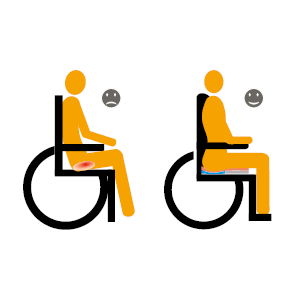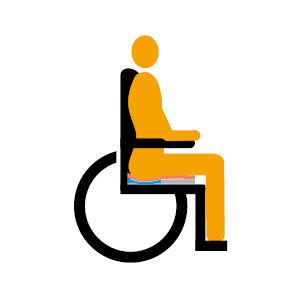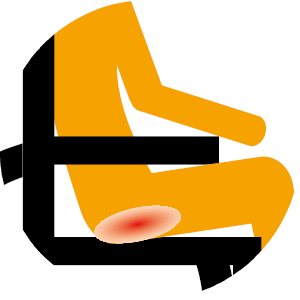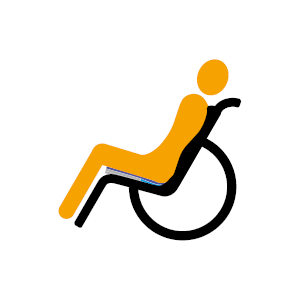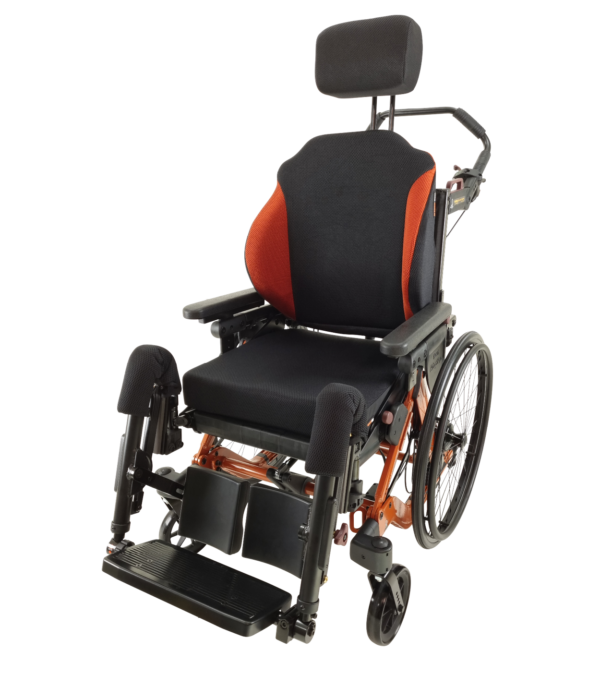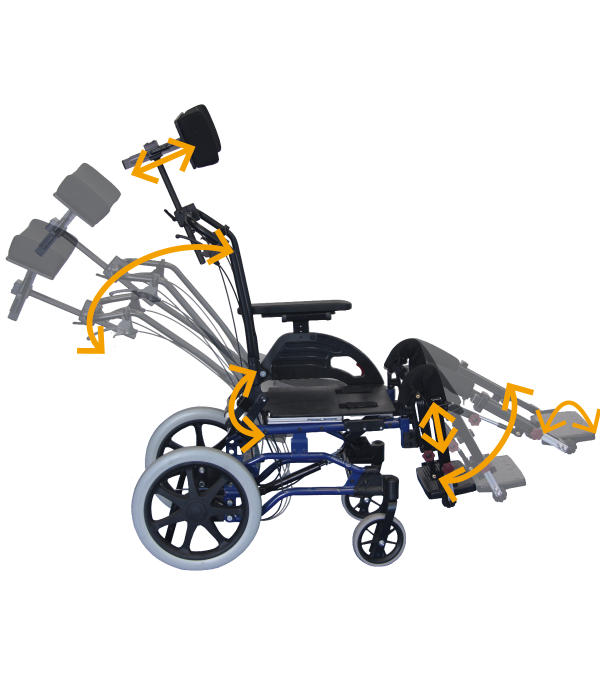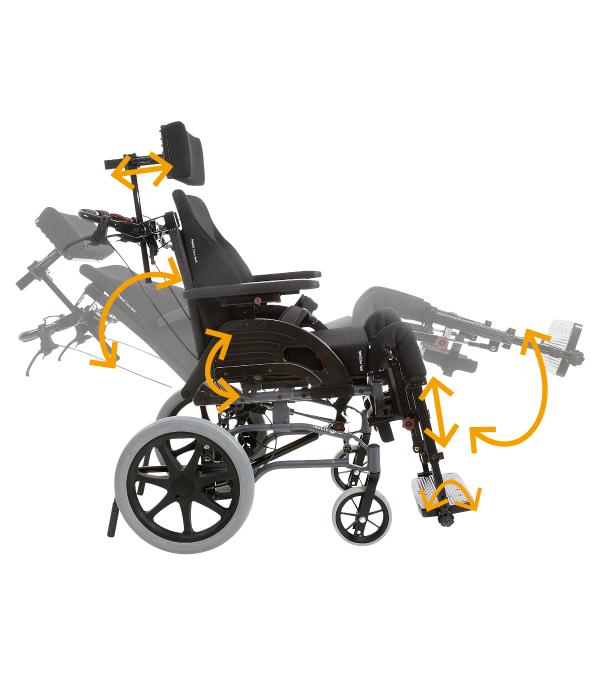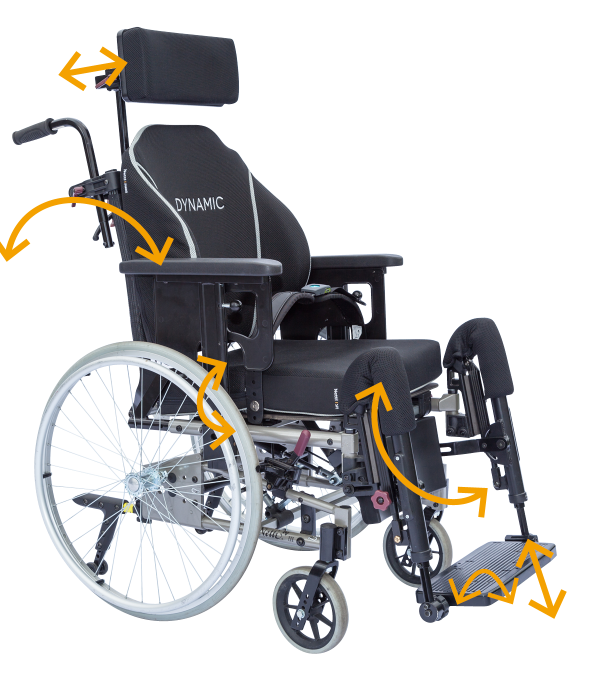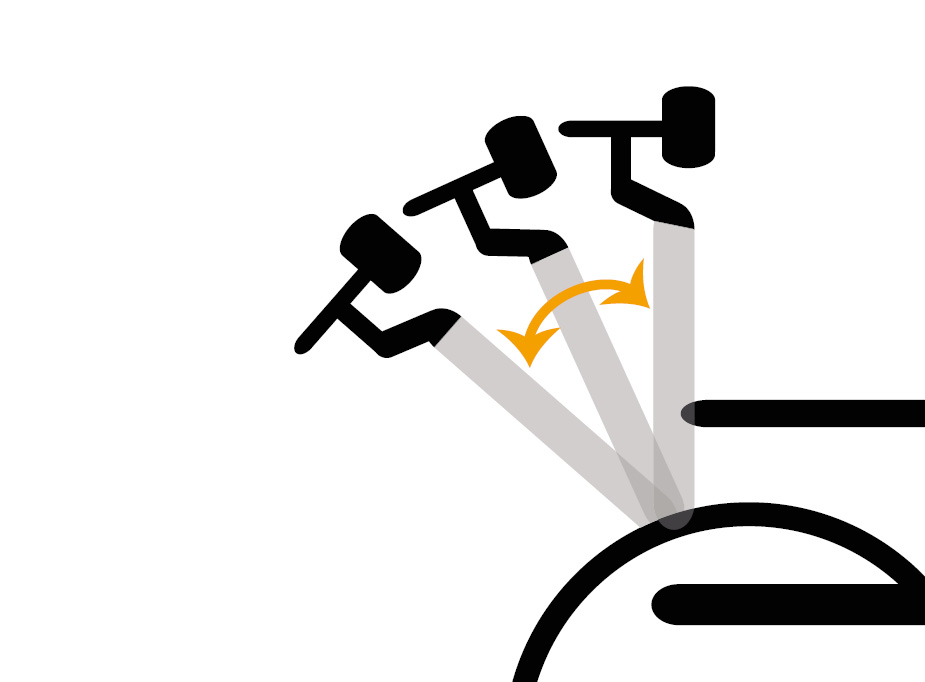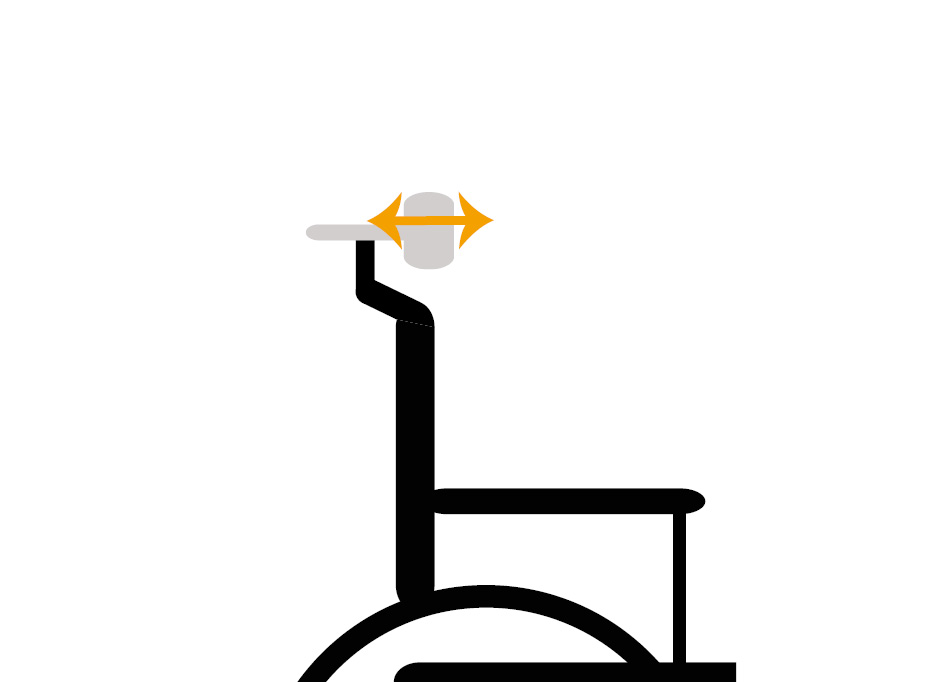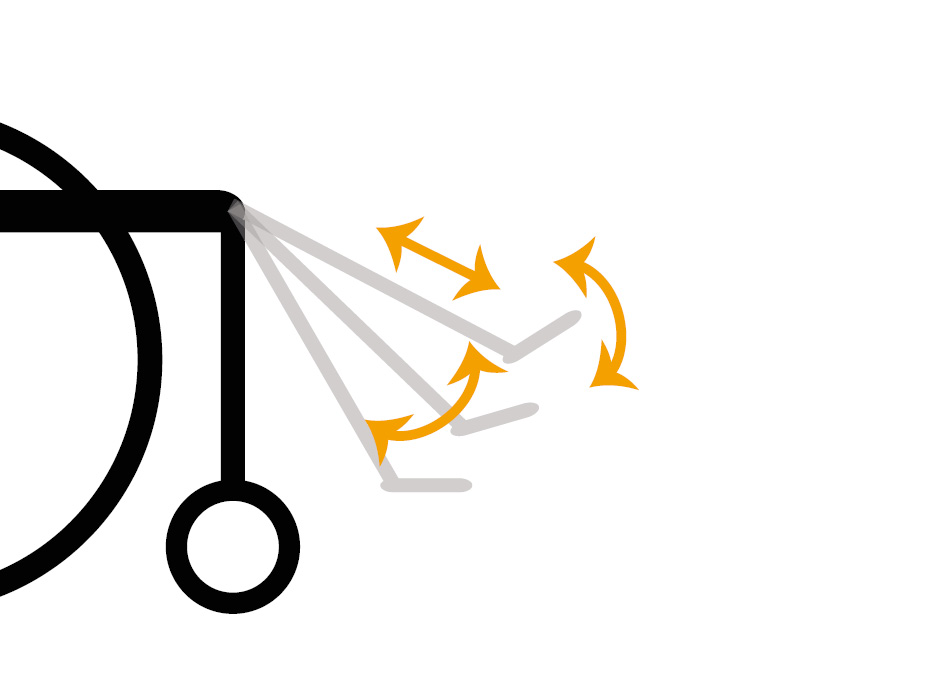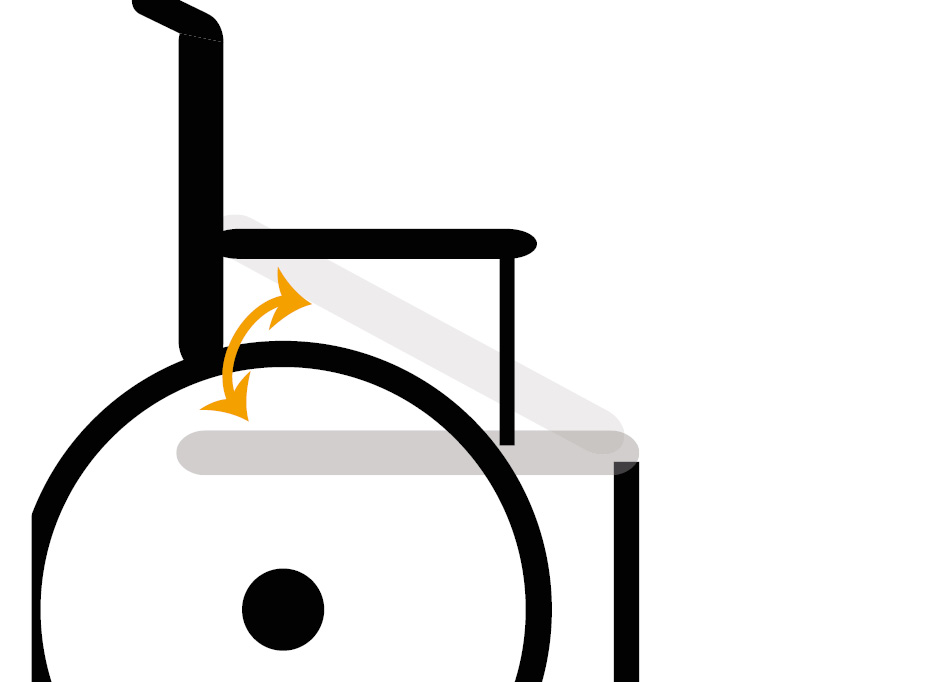The advantages
of Netti Dynamic System
Allowing movement
The patented Netti Dynamic System will accommodate the user’s extension movements by letting the wheelchair work in synergy with the unwilling movements. This means, that the user will use less energy “fighting against the wheelchair” and have more energy for other activities. For users with involuntary movements, these movements are often the only motoric way on how they can express themselves. Allowing them to move, allows them to express themselves.
Less discomfort during spasms
The uncontrolled movement and the strength of the movement is better guided with a dynamic solution. The user will have less discomfort during spasms as the wheelchair allows, guides and supports the movement. Our case studies show a reduction in unwilling movements, spasms and agitations over time. Also, by using a dynamic chair, it has been shown to result in a reduction of the experienced pain.
Maintain a good seating position
The dynamic solutions reduce the risk of sliding caused by the unwilling movements. In a static wheelchair the user will often slide out of the chair after a spasm due to the force impact on the back support which is directed forwards and the user “crawls” under the positioning belt. With a dynamic solution the wheelchair moves together with the user. This reduces the force applied to the back support which results in less counterforce forward, resulting in less “crawling” under the positioning belt, and makes sure the user returns to his original position after the spasm.
Better ADL for the user
When the quality of the seating position increases, the ADL functions will increase as well. It will be easier to e.g. drink, breath, speak etc. Being more relaxed and being able to maintain a good seating position, the user can sit in his chair for a longer time and spend more quality time with friends and family.
Better postural control
To improve the postural control and reduce the number of repositioning is always a goal in a wheelchair configuration. One of the largest challenges for wheelchair users is to reduce the tendency of sliding, and in that way avoid shear- and pressure forces which can lead to pressure ulcers. The Netti Dynamic System will accommodate the user’s extension movements by letting the wheelchair work in synergy with the user’s movements. After a period of spasm or involuntary movement, the user will return to the original seating position. Maintaining a correct position reduces the strain on the muscle skeletal system and in that way reduce pain and discomfort.
Our clinical cases have shown that the postural control is maintained over a longer period, and that the amount of repositioning has been reduced. This means better quality of life for the user, less time spent on repositioning, and reducing the risk to develop pressure ulcers.
Prevent pressure ulcer
Maintaining an optimal position will distribute the load to the soft tissue at the seat in the best possible way and therefor reduce the pressure forces. One of the largest challenges for wheelchair users is to reduce the tendency of sliding, and in that way avoid shear forces. Managing pressure and shear together with other factors like microclimate, and tissue compression will reduce the overall risk of pressure ulcer development.
Preventing injury
Allowing the chair to move with the user, that’s what we call “adapt the wheelchair to the user” and this will reduce the possibility for the user to hurt himself during a spasm. The chair will support the user and hence reduce the possibility for abrasions, muscle injuries and injuries caused by damaged parts on the chair. Over time you might also be able to see a reduction in unwilling movements and agitations as a secondary positive preventive side effect.
Improving organ- and cardio-vascular functions
Physiological functions like breathing, digestion and blood flow will improve. For the diaphragm, it is important to be able to move the upper spine and ribcage and stretch the front of the body so it’s less compressed. In this way, the lungs can be filled with air. When the lungs can be filled with air, the diaphragm will move downwards and thus push the digestive organs downwards which is important for a good digestive function. This will also allow for a good pressure difference between the chest and the abdomen which is important for a good fluid flow of blood and lymph which is an important factor for healthy and well functional organs.
Distributing forces
The uncontrolled movement and the strength of the movement is better guided with dynamic sitting components. The user will have less discomfort during spasms as the wheelchair supports the movement. Over time we have seen reduction in unwilling movements, spasms and agitations in our case studies.




